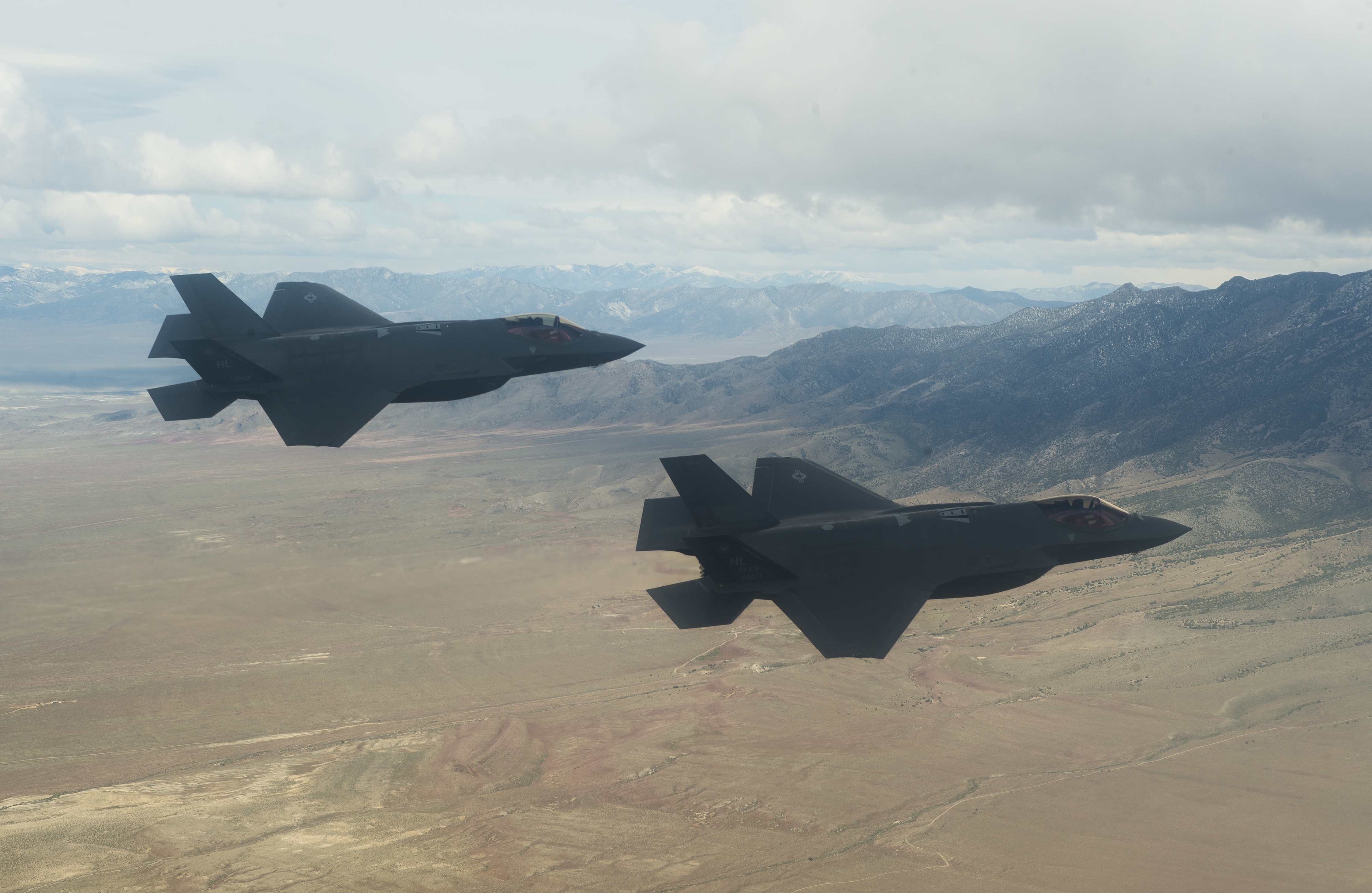
Two USAF F-35As, assigned to the 34th Fighter Squadron from Hill AFB, Utah, conduct flight training operations over the Utah Test and Training Range on May 17, 2017. Air Force photo by Sgt. Andrew Lee.
The F-35 program’s cost grew $11 billion in base year 2012 dollars because the Air Force has decided to buy the jets more slowly, the F-35 Joint Program Office reported late July 11.
The increase, reflected in the Pentagon’s periodic Selected Acquisition Reports, was “largely driven by the adjustments made to the US planned production profile,” JPO Program Executive Officer Vice Adm. Mat Winter said in a press release. “The Air Force reduced its maximum annual rate of aircraft procured from 80 per year down to 60 per year, which extended the planned purchases by six additional years,” from fiscal year 2038 to FY ‘44.
The stretch-out caused “a slight uptick” in unit recurring and program unit flyaway costs, the JPO reported, although “these costs have been partially offset” by recent “block buy” arrangements with foreign purchasers, actual contractor costs, and exchange rates. The flyaway costs “continue to decline and remain below SAR estimates,” the JPO added.
The Air Force had been pushing for production rates well above 80 a year but recently said it would hold off a big increase beyond 60 until the early 2020s, in order to avoid refits of aircraft equipped with the basic 3F configuration of software and weaponry.
Air Combat Command boss Gen. Mike Holmes, speaking at an AFA-sponsored breakfast on Capitol Hill on Tuesday, said that while the service asked for 46 F-35s in Fiscal 2018, “our goal is to reach 60,” which he said “is what we think is financially obtainable.” There were also 14 more jets in the Air Force’s “unfunded priorities” list sent to Congress.
Holmes said that “in the best-case world, we really should be buying 80-100, and if I was going to fix the average life of ACC’s aircraft,” which is now at 29 years and rising, “I’d like to buy about 150 fighters a year, and about 20-25” remotely piloted aircraft. Holmes said he could not overstate “how essential that weapon system will be to the Air Force. And it’s a weapon system, not an aircraft,” he noted, referring to the F-35.
Winter said the F-35 program “remains within all cost, schedule, and performance thresholds and continues to make steady progress.”
The F-35’s actual operating and sustainment cost “was not estimated” by the Pentagon’s Cost Assessment and Program Evaluation shop, “and remains unchanged from 2015,” Winter noted, meaning the SAR number fails to capture actual changes in Fiscal 2016. Winter said these costs rose four percent because the Pentagon is using a new fuel estimate that increased the expected cost per gallon, along with changes “in DOD beddown plans that added more than 135,000 flight hours and 63,000 operational aircraft years to the program.” If the Pentagon hadn’t made these changes, F-35 O&S costs “would have decreased by approximately $6.2 billion (in base year 2012 dollars) from last year’s estimate.”